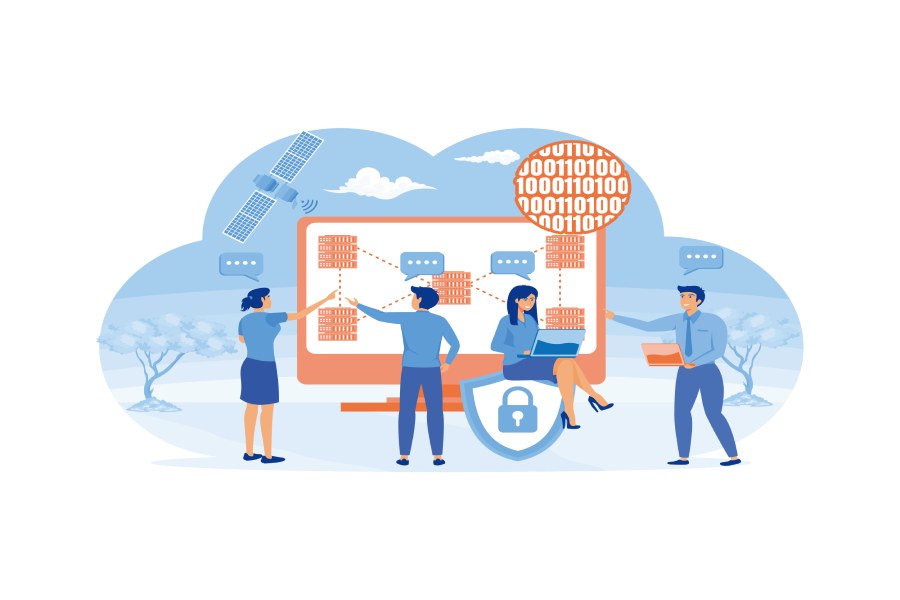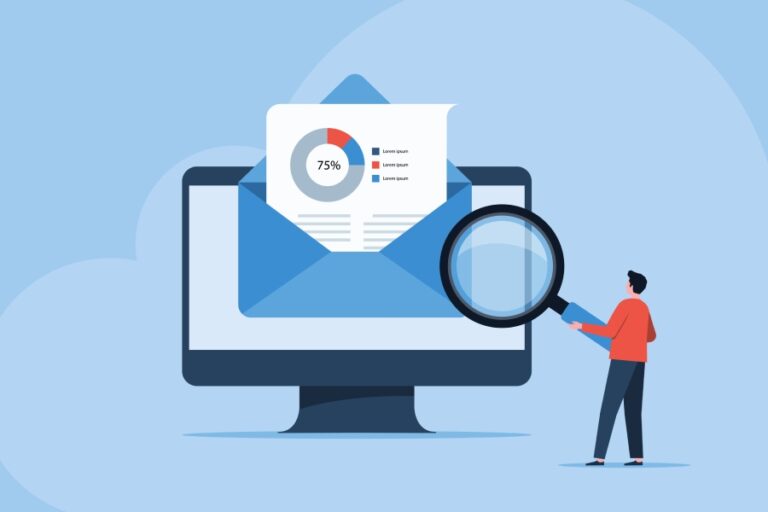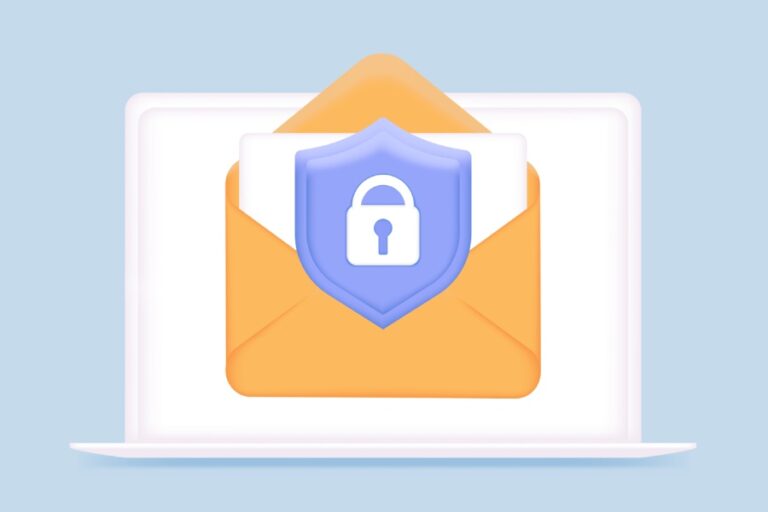A Guide to Deploying SPF, DKIM, and DMARC Like a Pro!
Does your organization send more than 5000 emails per day? Does it struggle to keep phishing and spoofing at bay despite implementing email authentication protocols— SPF, DKIM, and DMARC? Well, we understand that there is no foolproof way of preventing these cybersecurity attacks, but you certainly can limit their frequency and impact.
You’d be surprised to know that around 15% of companies, even those collaborating with vendors, manage to achieve email authentication enforcement. But with the right approach, you can dodge a major bullet and achieve enforcement with a success rate of over 95% without inadvertently blocking legitimate emails.
This brings us to a pertinent question: “What are these strategic measures that can make such a huge difference?” When it comes to ensuring the best email authentication and protecting your digital infrastructure from cyberattacks, it is recommended that you go the extra mile and adopt best practices.
Let us walk you through some of the best practices to follow for each protocol to help you fortify your email systems against the ever-evolving cyber threats landscape.
Key Considerations for SPF Configuration
When you dive headfirst into email security, particularly SPF (Sender Policy Framework), it can sometimes feel like navigating through a labyrinth. As you know, SPF works by allowing you to delineate which IP addresses are permitted to send emails from your domain, acting as an initial barrier against unauthorized use. Sounds simple, right? Well, as with any powerful tool, the devil lies in the details! That is to say, even the slightest misstep in its implementation could cost you quite a bit in terms of email deliverability and security.
Keep Your SPF Record Simple
One of the biggest misconceptions most organizations have when rolling out SPF is that adding all possible IP addresses and servers authorized to send emails on your domain’s behalf to your SPF record can enhance your email deliverability. If anything, it could lead to SPF record complications, such as legitimate emails being marked as spam or being rejected by the recipient’s server altogether. This is why experts suggest maintaining a concise and carefully curated SPF record.
Steer Clear of “+all” Mechanism
What’s the point of implementing SPF if you allow any server to send emails on behalf of your domain? This is exactly what the “+all” mechanism does! This mechanism essentially tells email receivers that any server is allowed to send emails from your domain, which opens the door to potential spoofers and phishers. Therefore, it’s advisable to avoid the +all” mechanism and configure your SPF record to only allow specified IP addresses to send mail on behalf of your domain.
Maintain CIDR Notation Range from /30 to /16
When you set up your SPF record with CIDR notation for IP addresses, make sure that your CIDR ranges from /30 to /16. This is an optimal range as it strikes a balance between being too broad and too restrictive. To put it simply, this approach helps you efficiently manage which IP addresses are permitted to send emails, ensuring security without overly limiting flexibility.
Key Considerations for DKIM Configuration
Just like SPF, setting up DKIM (DomainKeys Identified Mail) isn’t as uncomplicated as it seems. In theory, DKIM protects your emails by attaching a digital signature to them. This signature is linked to your domain name and plays a crucial role in verifying that the email hasn’t been tampered with during transit and actually comes from your domain. However, in practice, it can be quite confusing for security teams to properly authenticate their emails with DKIM.
Let’s break it down for you:
Rely on Longer DKIM Keys
If you’re setting up a digital signature for your emails, make sure that your keys are at least 1,024 bits long because shorter keys just don’t cut it anymore! As the digital landscape evolves, it becomes easier for cybercriminals to target vulnerabilities. It has become easier than ever for these adversaries to crack the key and get through your email infrastructure. Moreover, keys shorter than 1,024 bits are often disregarded and can potentially negate your DKIM efforts. So the next time you’re setting your DKIM keys, make sure to keep them at least 1,024 bits long, or even better, 2,048 bits.
Frequently Rotate Your DKIM Keys
Another non-negotiable aspect of safeguarding your email communications effectively through DKIM is to regularly update your DKIM keys. Over time, the same old key becomes an easier target for those looking to spoof your domain or launch other email attacks. But regularly updating your DKIM keys throws a wrench in the works for hackers, keeping them guessing and your emails secure.
Avoid “One-Key-Fits-All” Approach
If you are an MSP (Managed Service Provider), keep in mind that using the same DKIM key across multiple customers is a risky shortcut. A single key for all your clients is more likely to get compromised, and if that happens, it wouldn’t be just a problem but a catastrophe. To avoid such a disaster, it is recommended that you allocate a unique DKIM key to each customer. This not only bolsters security but also improves accountability and monitoring of email authentication and integrity.

Key Considerations for DMARC Configuration
Now that employing DMARC (Domain-based Message Authentication, Reporting, and Conformance) has become a norm, companies are now recognizing its importance and rapidly implementing this email authentication protocol to mitigate the risk of cyberattacks. But for those new to DMARC, configuring its policies can seem daunting. The choices — None, Quarantine, or Reject — determine how rigorously incoming emails are screened. So, it’s best that you follow a strategic approach when deploying these DMARC policies.
Here’s how you can do it:
Use a Phased Approach When Advancing Policies
One of the biggest mistakes that organizations make when adopting DMARC is that they dive straight into the ‘p=reject’ policy to achieve maximum protection. But this approach can be counterproductive. Instead of implementing a strict ‘reject’ policy from the onset, you should follow a more lenient policy, like ‘none’ or ‘monitoring that gives you an opportunity to test the waters— understand the landscape of their email-sending practices and ensure legitimate emails aren’t incorrectly flagged or rejected.
Once you know how your emails are perceived by the recipient’s server, you can move on to stricter policies like ‘p=quarantine’ and ‘p=reject,’ which help in refining authentication practices while keeping illegitimate emails out of the recipient’s inbox.

Embrace the Power of DMARC Reports
DMARC isn’t just about its policies. DMARC reports provide valuable insights into what your emails look like when they reach the receiver’s server, help identify and mitigate potential vulnerabilities and more. You can also use these insights to your advantages, as they can help you pinpoint and rectify authentication issues, ensuring that genuine emails reach their intended recipients. Moreover, DMARC reports play a crucial role in identifying unauthorized email sources, optimizing authentication mechanisms, and upholding a domain’s reputation.
So, while you might be tempted to overlook this critical aspect of DMARC, remind yourself that regularly reviewing and acting on the insights provided by DMARC reports is a key step in safeguarding against email phishing and spoofing attacks.
Staying Ahead of the Curve With Best Practices
Are you wondering if adopting these best practices when implementing SPF, DKIM, and DMARC is really necessary? The answer lies in the tangible benefits these protocols offer, elevating their importance from mere suggestions to a fundamental necessity of a robust cybersecurity strategy.
By prioritizing these best practices, you’re not only protecting your organization from potential cyber threats but also ensuring your messages are delivered reliably to your recipients’ inboxes, fostering trust and confidence. Another overlooked benefit of embracing these best practices is compliance with global and regional regulations, which is becoming increasingly crucial as digital communication norms evolve.
In an era of increasingly sophisticated digital threats, your adherence to these protocols is a testament to your commitment to cybersecurity excellence. After all, it’s about building a resilient infrastructure that not only withstands today’s challenges but is also prepared for tomorrow’s uncertainties.
Still think that building resilient infrastructure is a lofty goal that is impossible to achieve? The good news is that with the right tools and guidance by your side, you can create a comprehensive security ecosystem that enhances your organization’s credibility and ensures the integrity of your email communications.
At DMARC Report, we recognize keeping up with the ever-evolving threat landscape can be a challenge. You can rely on our comprehensive DMARC Reporting services to protect your brand against email abuse, phishing, or spoofing attacks by gaining insight and control over the emails that you send and monitoring if fraudulent emails are being sent (spoofed) from your domain. Whether you are an MSP, service provider, or business that needs to monitor and manage a large number of domains for DMARC compliance, we have got you covered!
For further details about our services, get in touch with our team of experts or book a demo today!







